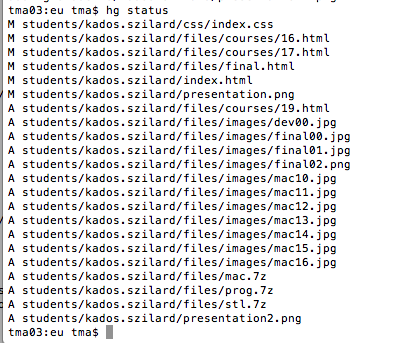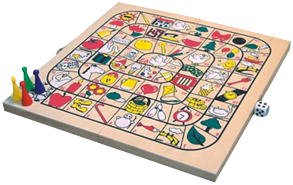Principles and Practice, Project Management
ASSIGNMENT UPDATE - 30th of June 2015
For this assignment and from this point forward, we had to use Mercurial version control program from TortoiseHG. With this software we had control of our website and all the files we would push to the MIT archives. We had to take special care of the size limit and not to push huge files to the archives, because that will remain in the history and fill up unwanted space.
To start using Mercurial firstly we have to create a repository, or clone the existing one we'll want to use, in this case the MIT archives. The use of Mercurial is fairly simple, but we have to take special care of couple of important details in order to NOT mess up all the existing repository. The workflow would be: pull the latest version of the archives, merge with your added files and push everything to the repository. We have to take in consideration the heads, or index, aswell and if there are more than one we'll have to merge them before pushing to the archives.

In the image we can see the hg status command of one of my final push. M meaning modified files and A meaning newly added files.
ASSIGNMENT - 28th of January 2015
INTRODUCTION
The main goal of this class was to introduce us in to personal website development and project management tools. The assignment for this week was to develop a personal repository, where all our gained experience should reflect; describe and document our final project.
Personally, I have chose to develop my website in Dreamweaver, since I have experience with this program. My graphic design background allowed me to develop the website from scratch and have the desired control over it. Since I'm a graphic designer also, I tend to rely only on design, but I managed to maintain a simple structure and not overfill the page with secondary information.
PROJECT DESCRIPTION
Since I'm interested in the implementation of the new technologies in everyday objects, I started to play with different ideas of implementing the new technologies in something traditional. From these wild ideas it occurred to me one really special: Interactive Goose Game. Not the traditional Goose Game where two children are playing each other face-to-face, but the interactive one! The one you can play over the Internet! A traditional game which connects to the Internet, synchronizes with another game and the users can play each other over the Internet.

The project itself can be a really ambitious project, but in the end I think it will worth it. In the next steps I'll try to describe the technical characteristics it may require the mentioned interactive game.
From mechanical point of view we would have only X and Y movement, which can be controlled by two stepper motors. These motors will move the token, which is synchronized with the other game over the internet. The actual movement (since the token is not fixed to the board) it can be made with magnets. The principal magnet moves along the X and Y, and drags along with him the token from the board. It can be made, but will have to check interference issues if they are any.
From electronics point of view a microcontroller will be needed for the game itself, and another one for the dice. Other electronic parts may include: bumpers, stepper motors, communication controllers, accelerometer, LEDs, etc.
From programming point of view a microcontroller can control all the movements, all the data income and outcome would happen with the communication controllers. If the dice will be connected we can control the token's movement even locally.
From 3D fabrication point of view I will have to design and build a slim box, which would contain all the electronics, making sure that everything fits together perfectly and works smoothly.


